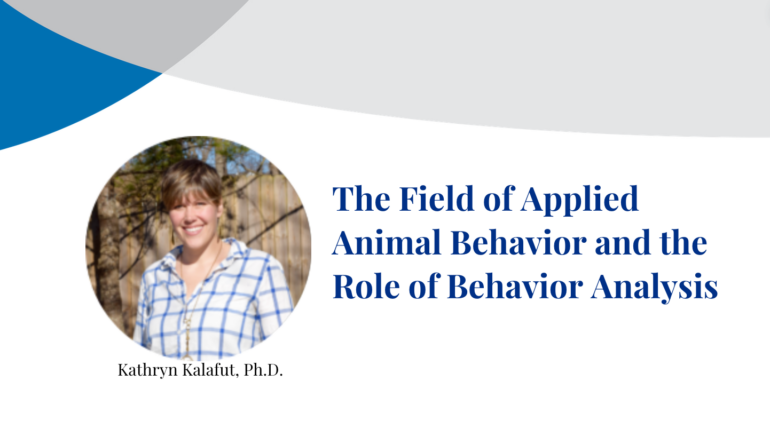Non-human animals are an important and invaluable part of human life. From companionship to agriculture to entertainment to service delivery and beyond, the mutual reliance between humans and animals continues to grow. Scientists who are interested in understanding how animals behave in these real-world settings make up the field of applied animal behavior (AAB).
The settings in which these scientists work include laboratories, sanctuaries, shelters, clinics, farms, zoos, personal homes, the natural world, and really any setting where humans engage with animals. Scientists in this field have diverse backgrounds, including but not limited to biologists, zoologists, behaviorists, agriculturists, neurologists, and veterinarians.
Those trained in the science of behavior analysis contribute to the AAB field with an understanding of learning and the impact that environment has on animal behavior. Individuals in the field ask (and are beginning to answer) questions such as:
- How do we create environments that allow for optimal animal welfare in zoos, sanctuaries, farms, or our home (and how do we define and measure welfare)?
- What are the conditions under which a threatened species is most likely to reproduce and successfully care for their young?
- Can we create environments where animals engage in behaviors that are beneficial to their own conservation in the wild?
- What factors contribute to enhanced milk and egg production and reduce disease in cows and chickens on a farm?
- How do we increase adoptability and reduce stress for dogs and cats in overcrowded shelters?
Scientists trained in learning and behavior tend to be interested in behavioral and environmental factors in the scenarios above, but that does not eliminate the importance of considering other factors such as physical health, physiological measures, species-specific behaviors, evolutionary history, and biological makeup. For example, I want to know about the natural behaviors, whether affiliative or aggressive, of an animal with which I am working, as well as how I can best set up the environment to account for these species-specific behaviors. Given the wide variety of potential factors that explain animal behavior, those in AAB tend to come from a variety of backgrounds, so collaborating with other members of the field is of great value.

